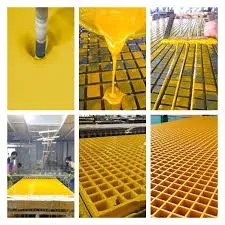
-
 Afrikaans
Afrikaans -
 Albanian
Albanian -
 Amharic
Amharic -
 Arabic
Arabic -
 Armenian
Armenian -
 Azerbaijani
Azerbaijani -
 Basque
Basque -
 Belarusian
Belarusian -
 Bengali
Bengali -
 Bosnian
Bosnian -
 Bulgarian
Bulgarian -
 Catalan
Catalan -
 Cebuano
Cebuano -
 China
China -
 China (Taiwan)
China (Taiwan) -
 Corsican
Corsican -
 Croatian
Croatian -
 Czech
Czech -
 Danish
Danish -
 Dutch
Dutch -
 English
English -
 Esperanto
Esperanto -
 Estonian
Estonian -
 Finnish
Finnish -
 French
French -
 Frisian
Frisian -
 Galician
Galician -
 Georgian
Georgian -
 German
German -
 Greek
Greek -
 Gujarati
Gujarati -
 Haitian Creole
Haitian Creole -
 hausa
hausa -
 hawaiian
hawaiian -
 Hebrew
Hebrew -
 Hindi
Hindi -
 Miao
Miao -
 Hungarian
Hungarian -
 Icelandic
Icelandic -
 igbo
igbo -
 Indonesian
Indonesian -
 irish
irish -
 Italian
Italian -
 Japanese
Japanese -
 Javanese
Javanese -
 Kannada
Kannada -
 kazakh
kazakh -
 Khmer
Khmer -
 Rwandese
Rwandese -
 Korean
Korean -
 Kurdish
Kurdish -
 Kyrgyz
Kyrgyz -
 Lao
Lao -
 Latin
Latin -
 Latvian
Latvian -
 Lithuanian
Lithuanian -
 Luxembourgish
Luxembourgish -
 Macedonian
Macedonian -
 Malgashi
Malgashi -
 Malay
Malay -
 Malayalam
Malayalam -
 Maltese
Maltese -
 Maori
Maori -
 Marathi
Marathi -
 Mongolian
Mongolian -
 Myanmar
Myanmar -
 Nepali
Nepali -
 Norwegian
Norwegian -
 Norwegian
Norwegian -
 Occitan
Occitan -
 Pashto
Pashto -
 Persian
Persian -
 Polish
Polish -
 Portuguese
Portuguese -
 Punjabi
Punjabi -
 Romanian
Romanian -
 Russian
Russian -
 Samoan
Samoan -
 Scottish Gaelic
Scottish Gaelic -
 Serbian
Serbian -
 Sesotho
Sesotho -
 Shona
Shona -
 Sindhi
Sindhi -
 Sinhala
Sinhala -
 Slovak
Slovak -
 Slovenian
Slovenian -
 Somali
Somali -
 Spanish
Spanish -
 Sundanese
Sundanese -
 Swahili
Swahili -
 Swedish
Swedish -
 Tagalog
Tagalog -
 Tajik
Tajik -
 Tamil
Tamil -
 Tatar
Tatar -
 Telugu
Telugu -
 Thai
Thai -
 Turkish
Turkish -
 Turkmen
Turkmen -
 Ukrainian
Ukrainian -
 Urdu
Urdu -
 Uighur
Uighur -
 Uzbek
Uzbek -
 Vietnamese
Vietnamese -
 Welsh
Welsh -
 Bantu
Bantu -
 Yiddish
Yiddish -
 Yoruba
Yoruba -
 Zulu
Zulu
Innovations in FRP Dampers for Enhanced Structural Performance and Earthquake Resistance
Understanding FRP Dampers Innovations in Structural Engineering
The world of structural engineering is continuously evolving, seeking more effective solutions to mitigate the impacts of environmental forces such as wind and seismic activities. One such innovation is the use of Fiber Reinforced Polymer (FRP) dampers, a technology that has garnered attention for its ability to enhance the resilience and stability of various structures, including bridges, buildings, and other critical infrastructure.
What are FRP Dampers?
FRP dampers are devices designed to absorb and dissipate kinetic energy during events like earthquakes and heavy winds. They achieve this through the integration of advanced composite materials—primarily fiber-reinforced polymers—which provide a unique combination of strength, lightweight properties, and resistance to corrosion. The strategic placement of these dampers can significantly reduce the oscillations of a structure, contributing to its overall safety and longevity.
These dampers come in various forms, utilizing different mechanisms to dissipate energy. Some common designs include viscoelastic dampers, friction dampers, and hysteretic dampers, each offering distinct advantages depending on the specific requirements of the structure they are used in.
Advantages of FRP Dampers
One of the primary benefits of FRP dampers is their lightweight nature compared to traditional materials such as steel. This characteristic translates to ease of installation and reduced structural load, which is critical for maintaining the integrity of older structures or those with specific load-bearing constraints. Moreover, FRP materials are immune to rust and corrosion, which are significant issues in many environments, particularly those exposed to moisture or saline conditions. This durability ensures a longer lifespan and lower maintenance costs for infrastructure equipped with FRP dampers.
Applications in Structural Design
frp damper

FRP dampers have been successfully employed in a variety of projects worldwide. For instance, high-rise buildings in seismically active regions can utilize these dampers to counteract the lateral forces generated during an earthquake. Bridges, especially those spanning long distances, benefit greatly from the implementation of FRP dampers to enhance their dynamic performance, ensuring safety during strong winds or seismic events.
Beyond their efficacy in traditional applications, FRP dampers are increasingly finding use in retrofitting existing structures. When added to older buildings or bridges, these dampers can provide a cost-effective solution to enhance earthquake resilience without the need for extensive reconstruction.
Future Perspectives
As research in materials science progresses, the potential for further advancements in FRP damper technology is promising. Ongoing developments focus on improving the efficiency and cost-effectiveness of these dampers, along with exploring new composite materials that can enhance their performance in extreme conditions.
Furthermore, integrating smart technology into FRP damper systems could revolutionize structural monitoring and maintenance. Smart sensors can provide real-time data on the structural health of buildings and bridges, enabling timely interventions and potentially preventing catastrophic failures.
Conclusion
FRP dampers represent a significant advancement in the field of structural engineering, providing effective solutions for energy dissipation and resilience enhancement. As the demands for safer, more durable structures increase, the role of FRP dampers will undoubtedly become more prominent. Their unique properties not only help to protect infrastructure from the forces of nature but also pave the way for innovative designs that prioritize safety and sustainability in our urban environments.









